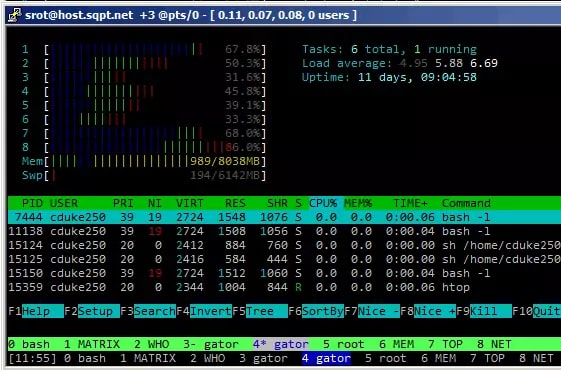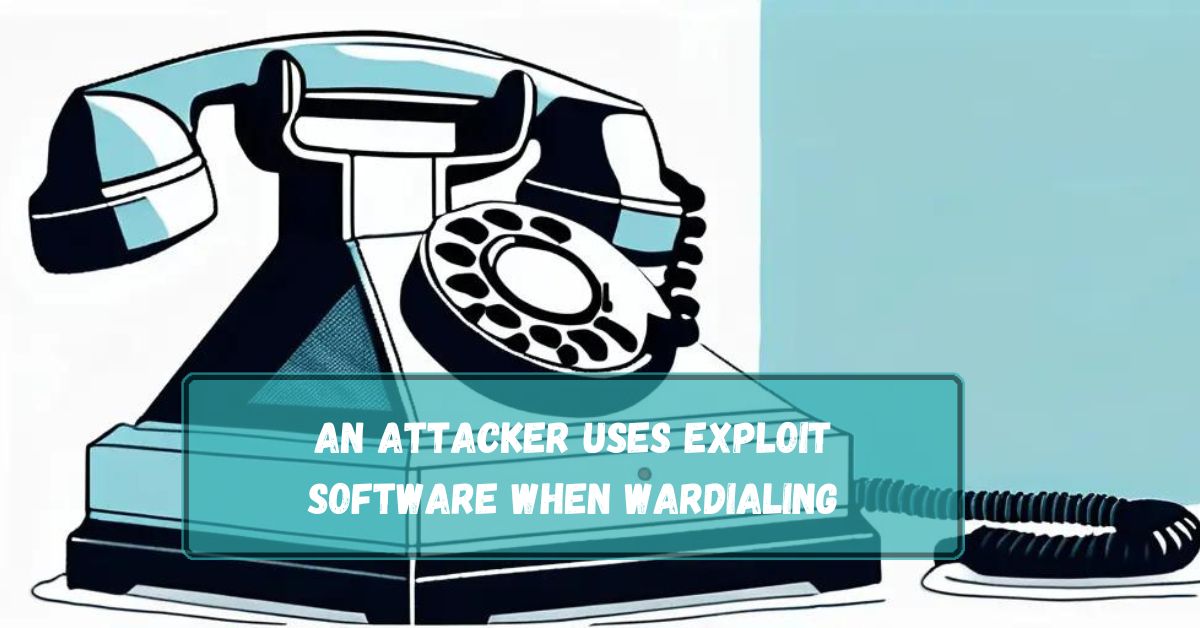Wardialing may seem like something from the early days of hacking, but it’s still a valid technique used by attackers today. Coupled with exploit software, wardialing can cause serious harm.
Wardialing is when attackers call many phone numbers to find a modem. They use exploit software to break into systems once a modem is found. This software takes advantage of weak points in the system.
In this article, we will discuss “An Attacker Uses Exploit Software When Wardialing”.
Table of Contents
What Is Wardialing?
Wardialing is a technique where an attacker uses a modem to dial a range of phone numbers, searching for vulnerable computer systems. It was commonly used in the 1980s and 1990s to exploit dial-up systems but has evolved with modern technology.
How Wardialing Works?

An attacker automates the dialing process using software, making thousands of calls. Once a connection is made to a computer or network, they attempt to gain unauthorized access, often using exploit software to attack the system.
Introduction To Exploit Software:
Exploit software is a tool designed to take advantage of security weaknesses in a system. There are many types, from those that target unpatched software to those exploiting hardware vulnerabilities. Exploit software is the go-to tool for attackers aiming to breach systems.
How Exploit Software Is Used During Wardialing?
During a wardialing attack, an attacker identifies a vulnerable system and uses exploit software to break through security barriers. This software can exploit weak authentication, outdated software, or misconfigured systems, giving the attacker control.
Common Vulnerabilities Targeted In Wardialing:
Attackers focus on weak password protections, unpatched systems, or outdated technologies. They often find access points in forgotten systems that remain connected to networks but lack modern security.
Consequences Of Wardialing Attacks:
The outcome of a wardialing attack can range from data theft to full system compromise. Attackers can gain control of networks, steal sensitive data, or even disrupt services, leading to financial and reputational loss for organizations.
Real-World Examples Of Wardialing Attacks:
There have been several cases where wardialing led to significant breaches. One notable example is a wardialing attack in the early 2000s that compromised thousands of credit card details by gaining access to vulnerable systems connected via phone lines.
Preventing Wardialing Attacks:
Preventing wardialing attacks requires a combination of modern network security tools and regular system updates. Ensuring that vulnerable systems are not connected to public phone lines is one of the key steps in prevention.
Best Practices For Protecting Against Exploit Software:
One of the best ways to protect against exploited software is by keeping systems updated with the latest patches. Regularly updating software, using strong authentication methods, and employing proper network segmentation can reduce vulnerabilities.
Role Of Firewalls In Preventing Wardialing:
Firewalls are essential in blocking unauthorized access attempts from wardialing attacks. By setting strict rules, firewalls can prevent suspicious incoming connections, stopping attackers from gaining access.
The Role Of Regular Security Audits:
Regular security audits help identify vulnerabilities that attackers may exploit. These audits should be frequent and thorough, focusing on outdated systems, misconfigurations, and any signs of compromise.
Using Intrusion Detection Systems (IDS):

Intrusion Detection Systems (IDS) are crucial in monitoring for unusual activity. They can identify wardialing attempts by flagging suspicious traffic or unusual connections, and alerting administrators before damage is done.
Cybersecurity Training For Staff:
Even the best technical defenses can be undermined by human error. Training staff to recognize potential threats, such as suspicious calls or signs of unauthorized system access, is key to preventing wardialing and exploiting software attacks.
An Attacker Uses Exploit Software When Wardialing Qui:
Wardialing is when attackers call many phone numbers to find a modem connection. They use exploit software to take control of weak systems after finding a modem, helping them gain unauthorized access to data or networks.
An Alteration Threat Violates Information Integrity:
An alteration threat happens when someone changes information without permission. This can damage the accuracy and trustworthiness of the data. Information integrity is violated when the original data is changed or tampered with.
Failing To Prevent An Attack All But Invites An Attack:
Failing to prevent an attack makes it easier for attackers to target your system. Weak security or no protection can attract attackers, increasing the chances of a successful attack on your system or data.
What Type Of Malicious Software Masquerades As Legitimate Software?
A Trojan horse is malicious software that pretends to be legitimate software. It tricks users into downloading or running it, giving attackers access to the system or causing harm without the user knowing.
FAQs:
1. What Is The Purpose Of Wardialing?
Attackers use wardialing to find vulnerable systems connected to phone lines that can be exploited for unauthorized access.
2. How Can I Protect My Network From Wardialing?
Use firewalls, update systems regularly, disconnect unused phone lines, and conduct regular security audits to stay protected.
3. What Types Of Exploit Software Are Most Commonly Used?
Exploit software often targets unpatched software, weak authentication, and outdated hardware vulnerabilities.
4. Can Antivirus Software Detect Warding Attempts?
While antivirus software can detect some types of exploit software, it might not detect wardialing attempts specifically.
5. How Often Should I Perform Security Audits?
It’s recommended that security audits be performed at least quarterly or after any major system changes.
Conclusion:
Wardialing is an old hacking method that still poses a risk today. Attackers use this technique to find weak systems, then exploit them using special software. To protect your systems, regularly update software, use strong security measures like firewalls, and perform frequent security audits. Training staff and disconnecting unused phone lines can also help reduce the risk of an attack. Staying vigilant is key to preventing these threats.
